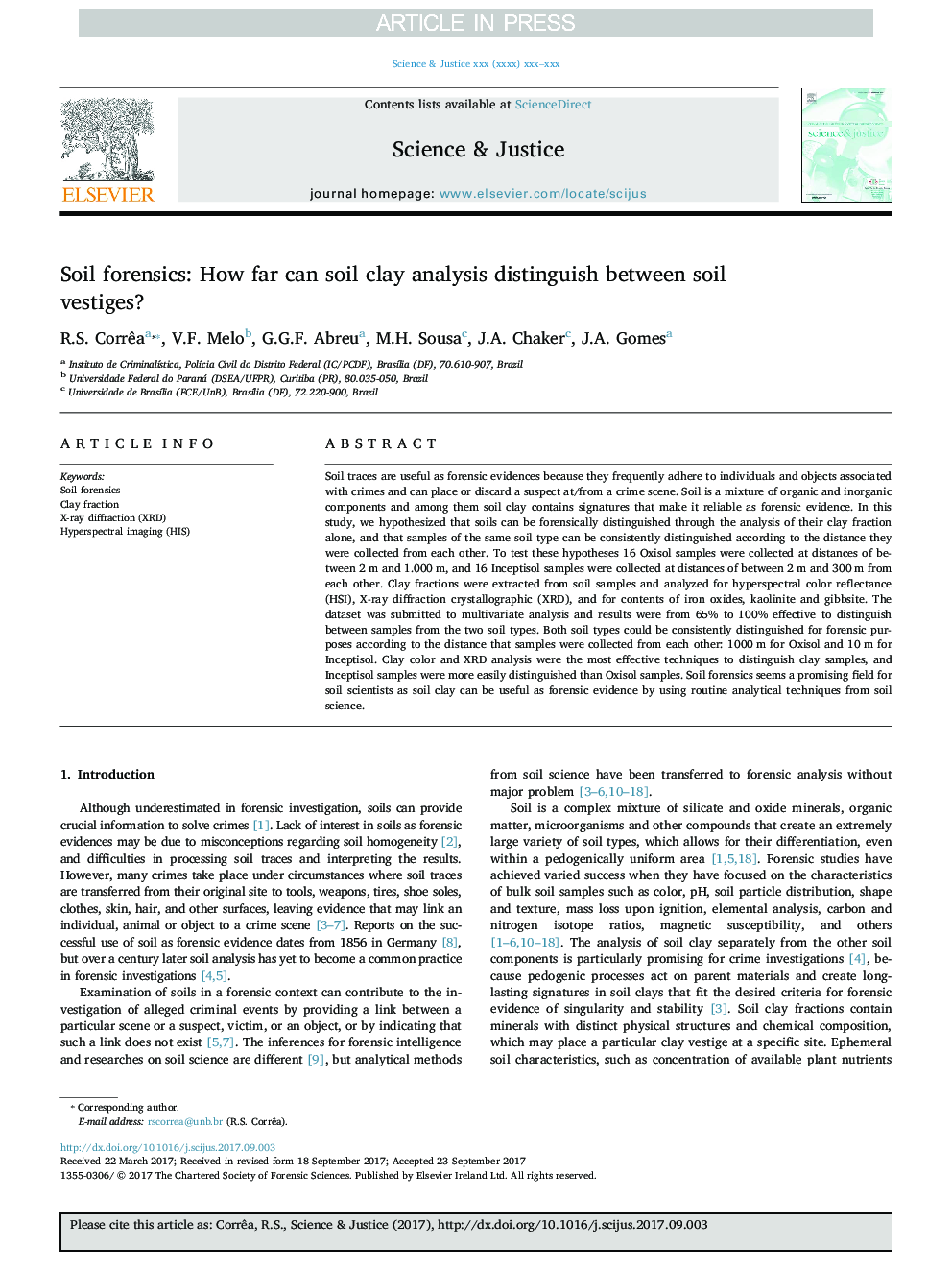| کد مقاله | کد نشریه | سال انتشار | مقاله انگلیسی | نسخه تمام متن |
|---|---|---|---|---|
| 6555920 | 1422499 | 2018 | 7 صفحه PDF | دانلود رایگان |
عنوان انگلیسی مقاله ISI
Soil forensics: How far can soil clay analysis distinguish between soil vestiges?
ترجمه فارسی عنوان
پیشگیری از خشکسال: آیا تجزیه خاک رس خاک می تواند بین سطوح خاک تفاوت داشته باشد؟
دانلود مقاله + سفارش ترجمه
دانلود مقاله ISI انگلیسی
رایگان برای ایرانیان
موضوعات مرتبط
مهندسی و علوم پایه
شیمی
شیمی آنالیزی یا شیمی تجزیه
چکیده انگلیسی
Soil traces are useful as forensic evidences because they frequently adhere to individuals and objects associated with crimes and can place or discard a suspect at/from a crime scene. Soil is a mixture of organic and inorganic components and among them soil clay contains signatures that make it reliable as forensic evidence. In this study, we hypothesized that soils can be forensically distinguished through the analysis of their clay fraction alone, and that samples of the same soil type can be consistently distinguished according to the distance they were collected from each other. To test these hypotheses 16 Oxisol samples were collected at distances of between 2Â m and 1.000Â m, and 16 Inceptisol samples were collected at distances of between 2Â m and 300Â m from each other. Clay fractions were extracted from soil samples and analyzed for hyperspectral color reflectance (HSI), X-ray diffraction crystallographic (XRD), and for contents of iron oxides, kaolinite and gibbsite. The dataset was submitted to multivariate analysis and results were from 65% to 100% effective to distinguish between samples from the two soil types. Both soil types could be consistently distinguished for forensic purposes according to the distance that samples were collected from each other: 1000Â m for Oxisol and 10Â m for Inceptisol. Clay color and XRD analysis were the most effective techniques to distinguish clay samples, and Inceptisol samples were more easily distinguished than Oxisol samples. Soil forensics seems a promising field for soil scientists as soil clay can be useful as forensic evidence by using routine analytical techniques from soil science.
ناشر
Database: Elsevier - ScienceDirect (ساینس دایرکت)
Journal: Science & Justice - Volume 58, Issue 2, March 2018, Pages 138-144
Journal: Science & Justice - Volume 58, Issue 2, March 2018, Pages 138-144
نویسندگان
R.S. Corrêa, V.F. Melo, G.G.F. Abreu, M.H. Sousa, J.A. Chaker, J.A. Gomes,
